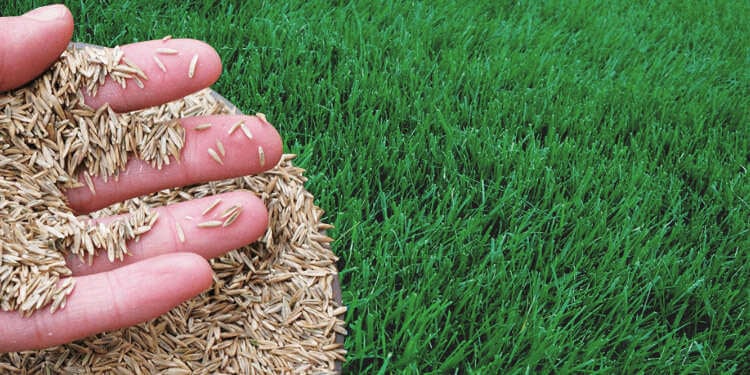Cool-season grasses such as Kentucky bluegrass, ryegrass and fescues adore fall and spring weather. Their growth cycle launches into overdrive during cooler months and slows down again when summer temperatures hit.
Knowing when to plant cool-season grass has a huge impact on germination and lawn health. In turn, healthy grass is more resistant to pests and other issues.
What Are the Best Months To Plant Cool Season Grass?
There are two main growing seasons for cool-season grasses: fall and spring. Planting in one or both of these time frames gives new grass enough time to germinate and become established before the intense weather extremes of summer and winter.
- Fall: The ideal time to seed grass in northern climates is in the fall. That’s because fall is the perfect combination of everything new grass loves. For example, the ground is still warm but not too hot, the air temperature is just right for growth, and there’s an abundance of rain and moisture in the soil. Late August and early September are popular times for seeding or overseeding.
- Spring: If you missed your chance to seed in the fall, spring is the next-best choice. It offers a short window of cool weather for seed growth before hot summer months appear. Spring also provides an opportunity to touch up any bare spots from areas where the grass died over the winter, such as from a parked snowblower or snowmobile.
In Northern Michigan, for example, planting is best in late August. A helpful rule of thumb for planting and overseeding is to get new seed in the ground at least 45 days before the first frost.
What Other Lawn Care Tasks Should You Mark on Your Calendar?
Deciding when to plant cool-season grass is important, but it’s only the first step on your road to an immaculate lawn. For gorgeous and healthy grass around your house, it’s helpful to mark yard essentials on your calendar. Here are a few vital tasks for taking great care of your lawn:
- Soil testing: Around February, as the soil starts to warm up a bit, it’s a good idea to test the soil to see if your yard, trees, shrubs or garden are missing important nutrients.
- Correcting soil issues: If the soil tests revealed any pH or nutrient problems, March is a good month to make corrections. Lime or sulfur can adjust pH issues, and specific fertilizers are helpful for adding nutrients.
- Fertilizing: For a lustrous lawn, you can’t beat the effects of proper fertilizing. Late April or early May are great spring months for fertilizing. In the fall, add nutrients in late August or early September.
- Aeration: This technique helps plants to breathe and lets grass seeds penetrate deeper into the ground. August is the best time to aerate the soil, right before planting new seeds.
- Raking: Dead leaves and snow can smother growing grass, so don’t forget to take the time to rake. Around October, get rid of fallen leaves and turn them into mulch. Exposing grass to fresh air in the spring is also important to protect against lawn problems.
Why Contact Lawn Care Professionals for Help With Seeding?
When you’re not feeling well, a doctor can help you discover what’s going wrong and what to do to solve the problem. The same thing is true for a healthy lawn. Our lawn care experts at Lush Lawn take amazing care of your grass, from planting and fertilizing to winter preparation and other regular care tasks.
We know everything about lawns and the local climate, so we can ensure that your lawn stays healthy and vibrant all year long. Contact us right away to schedule an appointment.
